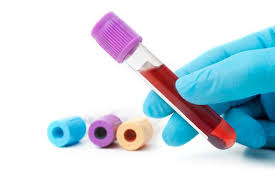 This morning I had fasting blood labs drawn. Fasting can be a challenge for people who take insulin. In the perfect world, our basal (background) insulin would keep us steady in our target range if we don’t eat. However – newsflash! – diabetes is not a perfect science. People who wear insulin pumps may have a slightly easier time managing during a fast (you can increase or decrease your basal rate as needed). People who wear continuous glucose monitors have it even better: you can tell by the trending arrows and patterns where your blood glucose is likely to go and dose insulin accordingly. Those who wear a hybrid closed loop pump probably have it best of all, because the pump determines the basal rate moment by moment.
This morning I had fasting blood labs drawn. Fasting can be a challenge for people who take insulin. In the perfect world, our basal (background) insulin would keep us steady in our target range if we don’t eat. However – newsflash! – diabetes is not a perfect science. People who wear insulin pumps may have a slightly easier time managing during a fast (you can increase or decrease your basal rate as needed). People who wear continuous glucose monitors have it even better: you can tell by the trending arrows and patterns where your blood glucose is likely to go and dose insulin accordingly. Those who wear a hybrid closed loop pump probably have it best of all, because the pump determines the basal rate moment by moment.
For reasons I’ve written about in the past, I use a vial and syringe, so I’m old school when it comes to fasting. I take my usual basal dose and run myself slightly higher the night before the blood draw. This morning I woke up 177 and took 2 units of rapid-acting insulin to bring that down. When I left the house I was 127. After lab draw and before breakfast I was 103. Of course it doesn’t always work that well. One time many years ago I was low before a fasting blood draw. I took glucose tablets to treat the low and was later told that was not a problem for the blood draw.
Here are some suggestions: 1) ask if fasting is necessary for the blood draw (maybe it’s not!), 2) find out how you can treat a low if you need to do so overnight or in the morning (or if you’d have to reschedule), 3) get your blood drawn first thing if at all possible, 4) if you don’t check your blood glucose often, or if your overnight blood glucose is unpredictable, ask your health care provider about lowering your basal dose overnight, 5) treating a low is more important than fasting!
